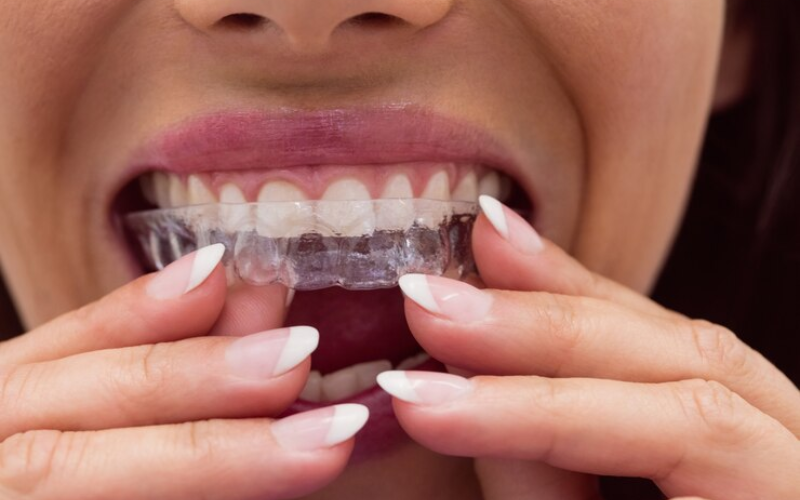1101-116 Grande Blvd, Cochrane, Alberta, T4C 2G4
How an Invisalign Dentist Can Correct Common Dental Issues?

Invisalign is a popular orthodontic treatment that uses clear, removable aligners to straighten teeth and correct dental issues. Unlike traditional metal braces, Invisalign offers a more discreet and comfortable way to achieve a perfect smile.
But how exactly can an Invisalign dentist help address common dental problems? Here’s a blog to explore the various ways Invisalign can correct prevalent dental issues and why consulting with an Invisalign dentist might be the best choice for your orthodontic needs.
What Is Invisalign?
Invisalign is a modern orthodontic treatment that uses a series of custom-made, clear aligners to gradually move teeth into their desired positions. These aligners are virtually invisible and can be removed for eating, brushing, and flossing, offering a more flexible and comfortable alternative to traditional braces.
How Does It Work?
- Initial Consultation: The process begins with a consultation with your dentist, who will evaluate your dental health and discuss your treatment goals.
- Custom Treatment Plan: Using advanced imaging technology, the dentist creates a digital 3D model of your teeth and develops a customized treatment plan.
- Aligner Production: Based on this plan, a series of aligners are manufactured to fit your teeth precisely.
- Wearing Aligners: You’ll wear each set of aligners for about two weeks, gradually shifting your teeth into place.
- Regular Check-Ups: Periodic visits to the dentist will ensure your treatment is progressing as planned.
Common Dental Issues Corrected by Invisalign
1. Misaligned Teeth
One of the primary reasons people choose Invisalign is to correct misaligned teeth. Misalignment can lead to issues with bite, chewing, and overall oral health.
- How Invisalign Helps: It gently shifts misaligned teeth into their proper positions. The gradual movement helps achieve a more balanced bite and enhances overall functionality.
- Benefits: Improved bite alignment, easier chewing, and enhanced appearance.
2. Gaps Between Teeth
Gaps or spaces between teeth can be both a cosmetic concern and a functional issue. They can affect your confidence and may lead to problems with bite and speech.
- How Invisalign Helps: They are designed to close gaps by gradually moving the surrounding teeth closer together. The process is precise, addressing each gap individually.
- Benefits: Reduced gaps improve the appearance of your smile and help maintain proper dental function.
3. Overbites and Underbites
An overbite occurs when the upper teeth significantly overlap the lower teeth, while an underbite happens when the lower teeth protrude beyond the upper teeth. Both conditions can impact chewing and speech.
- How Invisalign Helps: It corrects bite issues by adjusting the positioning of the teeth and aligning the jaws. The treatment plan is tailored to address the specific bite issue.
- Benefits: Improved bite alignment, enhanced chewing function, and a more harmonious smile.
4. Crooked Teeth
Crooked teeth can make it challenging to maintain oral hygiene and can affect your confidence and speech.
- How Invisalign Helps: It progressively straighten crooked teeth, making it easier to brush and floss effectively. The aligners are customized to address the unique angles and positions of your teeth.
- Benefits: Straighter teeth make it easier to maintain oral hygiene, improve confidence, and enhance speech.
5. Crossbites
A crossbite occurs when one or more of your upper teeth bite on the inside of your lower teeth. This can lead to uneven wear and jaw discomfort.
- How Invisalign Helps: It can correct crossbites by gradually shifting the affected teeth into their proper positions. The treatment helps achieve a balanced bite and reduces discomfort.
- Benefits: Improved bite alignment, reduced risk of uneven wear, and relief from jaw discomfort.
Why Choose an Invisalign Dentist?
Expertise and Knowledge
Invisalign dentists are trained and have immense knowledge of this specific orthodontic system. They understand the intricacies of the aligners and how to customize treatment plans to achieve the best results.
- Benefits: Expertise ensures accurate treatment planning and effective results, reducing the likelihood of complications.
Personalized Care
Invisalign dentists offer personalized care tailored to your unique dental needs. They use advanced technology to create a precise treatment plan and monitor your progress throughout the process.
- Benefits: Personalized care leads to more effective treatment and a higher likelihood of achieving your desired results.
Convenience and Comfort
Invisalign dentists prioritize patient comfort and convenience. The treatment involves fewer adjustments and is generally less intrusive than traditional braces.
- Benefits: More comfortable experience and fewer visits to the dentist, making it easier to fit orthodontic treatment into your lifestyle.
Invisalign is a versatile and effective solution for correcting common dental issues. Whether you’re dealing with misaligned teeth, gaps, overbites, crooked teeth, or crossbites, an Invisalign dentist can help you achieve a healthier, more confident smile.
If you’re considering orthodontic treatment, consult with an Invisalign dentist to explore how this innovative solution can address your specific dental needs and enhance your smile.
For those ready to improve their oral health and aesthetic appeal, Invisalign offers a modern approach to achieving a perfect smile. Contact an Invisalign dentist today to start your journey toward a healthier, more radiant smile.




